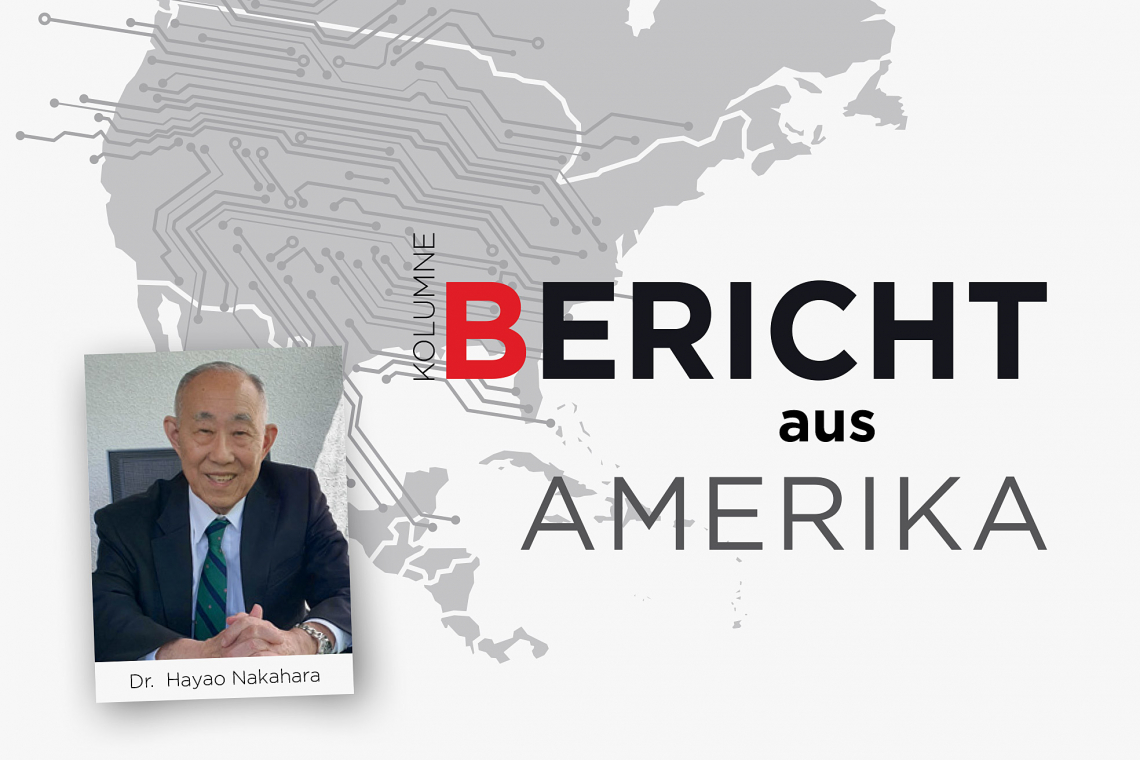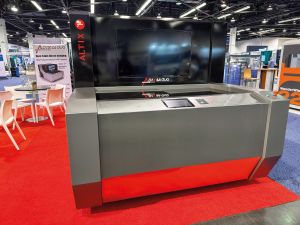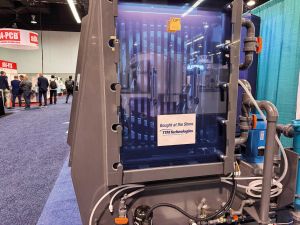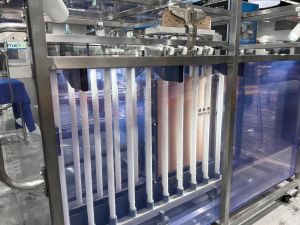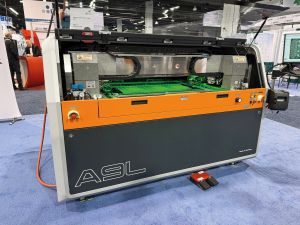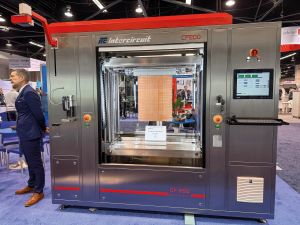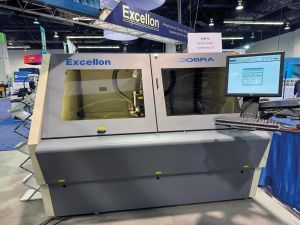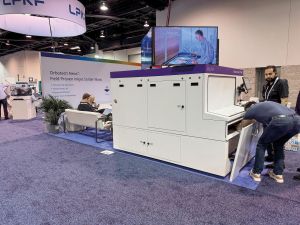From March 15-20, the APEX Conference & Exhibition took place in Anaheim, California. The author did not attend the conference, but spent three full days at the show and met up with old friends to share information about the PCB situation in North America. He made new friends, snapped over a thousand photos and learned some things that would have been difficult to do from the office. The resulting report, presented here, attempts to explore where the North American PCB industry stands and where it is headed.
As the Trump administration imposes one new tariff after another, it may be appropriate to begin discussing PCB imports and exports. Years ago, in 1990 to be exact, the author visited the consulates general of various countries in New York City to obtain import and export statistics for printed circuit boards and compare the figures with those of the U.S. Department of Commerce. Neither source was accurate, as the data included not only bare PCBs but also assembled PCBs and, in some cases, copper clad laminate (CCL). The author has since run out of energy to visit the Consulates General in New York and has lost contact with DOC staff. The only data he has been able to obtain is from the Observatory of Economic Complexity (OEC) - and the latest is from 2023. The data listed on the OEC website [1] is not accurate, but it is interesting to examine it in light of the Trump tariffs. According to the OEC, some countries export more PCBs than are produced in those countries. Please compare the preliminary global PCB production data compiled by the author. The author does not claim that the table is 'absolutely' correct, but considers it 'reasonable'.
Global trade and production data for printed circuit boards by country (2023)
| Country | billion $ |
| China | 22.9 |
| Taiwan | 5.1 |
| Japan | 3.8 |
| South Korea | 3.5 |
| Thailand | 3.5 |
| Hong Kong | 1.7 |
| Vietnam | 1.2 |
| Germany 1.2 | 1.2 |
| Malaysia | 0.7 |
| Singapore | 0.6 |
| Philippines | 0.4 |
| Rest of Asia | 1.7 |
| Austria | 0.3 |
| Region | 2021 | 2022 | 2023 | 2024E |
| North and South America | 3,400 | 3,520 | 3,210 | 3,340 |
| Europe | 2,025 | 2,160 | 1,980 | 1,985 |
| Middle East and Africa | 145 | 155 | 200 | 240 |
| West total | 5,570 | 5,835 | 5,390 | 5,565 |
| China | 54,205 | 56,720 | 54,000 | 56,400 |
| Taiwan | 10,900 | 11,930 | 10,200 | 10,800 |
| Japan | 5,945 | 6,560 | 5,790 | 6,050 |
| South Korea | 7,220 | 8,570 | 7,760 | 8,320 |
| Thailand | 3,175 | 3,350 | 3,050 | 3,600 |
| Vietnam | 3,110 | 3,200 | 2,900 | 3,300 |
| Rest of Asia and India | 1,250 | 1,340 | 1,200 | 1,580 |
| Asia total | 85,805 | 91,670 | 84,900 | 90,050 |
| Total global production | 91,375 | 97,505 | 90,290 | 95,615 |
| Country | Total in million $ |
| China | 773 |
| Taiwan | 539 |
| Japan | 191 |
| Canada | 150 |
| South Korea | 147 |
| Thailand | 135 |
| Mexico | 100 |
| Switzerland | 50 |
| Vietnam | 46 |
| Israel | 43 |
| Others | 326 |
| total | 2,500 |
| Country | Total million $ |
| Mexico | 228 |
| Malaysia | 127 |
| Canada | 66 |
| China | 47 |
| Hungary | 36 |
| Other | 407 |
| total | 911 |
Consideration
Of an estimated $56.4 billion production value in China in 2024, about $36 billion came from Chinese manufacturers, $16 billion from Taiwanese, $2.0 billion from Japanese, $1.3 billion from US and $1.1 billion from European. The author examined the export data of about 150 Chinese manufacturers to the US based on company presentations, catalogs, visits, interviews at trade shows, website studies, etc. He came up with about $4 billion. There are 1,250 Chinese manufacturers. The author reviewed records from about 700 Chinese manufacturers. Think about how many US OEMs are dependent on Chinese PCB manufacturers! Apple alone buys several billion dollars worth of circuit boards.
There are hundreds of US OEMs, Cisco, Apple, Meta, Google, H-P, Dell, Amazon, etc. etc. that depend on EMS in China and other parts of the world to assemble their products. PCBs are supplied to assembly providers such as Foxconn, Flex, Pegatron, Wistron, Jabil and many others who mount components on the PCBs and perform final assembly of the products for their customers. US imports of smartphones from China amounted to $44 billion in 2023 and PC imports to $36 billion. The value of PCBs for these two products alone is likely to exceed $2 billion. Global exports could be twice as high as these figures.
Further consideration
According to the OEC, $100 million worth of PCBs were exported to the US in 2023. Mexico has hardly any PCB manufacturers. The only 'major' manufacturer known to the author is Saehan Electronics de Mexico in Tijuana with annual sales of around $18-20 million. The company manufactures metal core printed circuit boards (aluminum). There are some very small manufacturers in Monterrey, Mexico City and Guadalajara, but their production is tiny. The $100 million identified is probably mainly assembled PCBs. Looking at PCB exports to and from the US(see Table 3 and Table 4), the US exported $127m worth of PCBs to Malaysia. This will decrease as TTM Malaysia increases its production capacity.
Looking at the table of PCB exports for 2023(see Tab. 1), Singapore exported $600 million. The country's PCB production is estimated to be around $320 million. How can exports be twice as high as production? In other words, the OEC data may be correct, but it cannot identify the import and export of bare PCBs.
With these thoughts in mind, the author attended the IPC Expo Show with a particular interest in equipment and material manufacturers trying to get their foot in the door in the U.S. - where domestic production is only 30%.
Trade show rumors
Calumet Electronics
The Michigan-based company received a $39.9 million grant from the Department of Defense for a new facility focused on high-value printed circuit boards, including IC-PKG substrates, for the defense sector. The total investment for this new facility is expected to be $51 million.
GreenSource
The New Hampshire-based company also received $46.2 million from the Department of Defense for the new facility, which is under construction and will be dedicated to IC-PKG substrates. The building is scheduled for completion in August, followed by the installation of equipment.
Hyperion Technologies
According to the website www.hyperion.com, the company was founded by two former Intel engineers in Arizona to produce advanced IC-PKG substrates. The project is expected to create 1,500 jobs and 4,500 construction jobs and generate $6.6 billion in economic output.
Swiss Engineering Lab
The company is expanding its production capacity in Moscow, Idaho.
SpaceX
The company expands and adds the second and third (?) building next to the existing plant. About 20% of the first building will be used for the production of printed circuit boards - initially for one part number. Another rumor says the second plant will be for panel-level package substrates.
 SpaceX plant near Austin, Texas
SpaceX plant near Austin, Texas
TTM Technologies
The new $130 million, fully automated circuit board factory in DeWitt, New York - just east of Syracuse - received a $30 million grant from the Department of Defense. According to news reports, WISE horizontal process equipment (15 units) and Lauffer multilayer presses appear to have been selected among other equipment. The products of this factory are mainly for the defense sector.
Final consideration
The turnover (sales) of printed circuit boards in North America is estimated at around 3.2 billion dollars. The average number of layers is said to be about twelve, and the average lot size is about six to seven boards. Of course, there are some PCBs with a much lower and a much higher number of layers than twelve layers. The cost of CCL and prepreg should be about 15% of the 'production cost', not the selling price. With a profit of 10% on 'sales' of $3.2 billion, production costs amount to $2.9 billion. 15% of this is $430 million - the North American CCL and prepreg market. There are three domestic CCL manufacturers in the US: Rogers, AGC and Isola. The author has no idea what their sales are in North America. There are also EMC, ITEQ and TUC from Taiwan/China, Shengyi Technology, Ventec and KB Chemicals from China and Panasonic from Japan, which are trying to gain market share. Competition in the CCL market in North America must be fierce.
There is only one copper foil supplier in the US called Nippon Denkai, based in North Carolina. It is owned by a Japanese and was purchased by Oak Mitsui. Nippon Denkai is about to close. After that, copper foil will have to be 100% imported. Isola and AGC basically seem to import all the ingredients from Asia and just treat and press them. Accordingly, it is difficult for the author to envision strong growth in the North American PCB industry, independent of Asia. Hopefully he is wrong.
References
[1] www.oec.world/en/resources/about (Retrieved: 15.04.2025)




